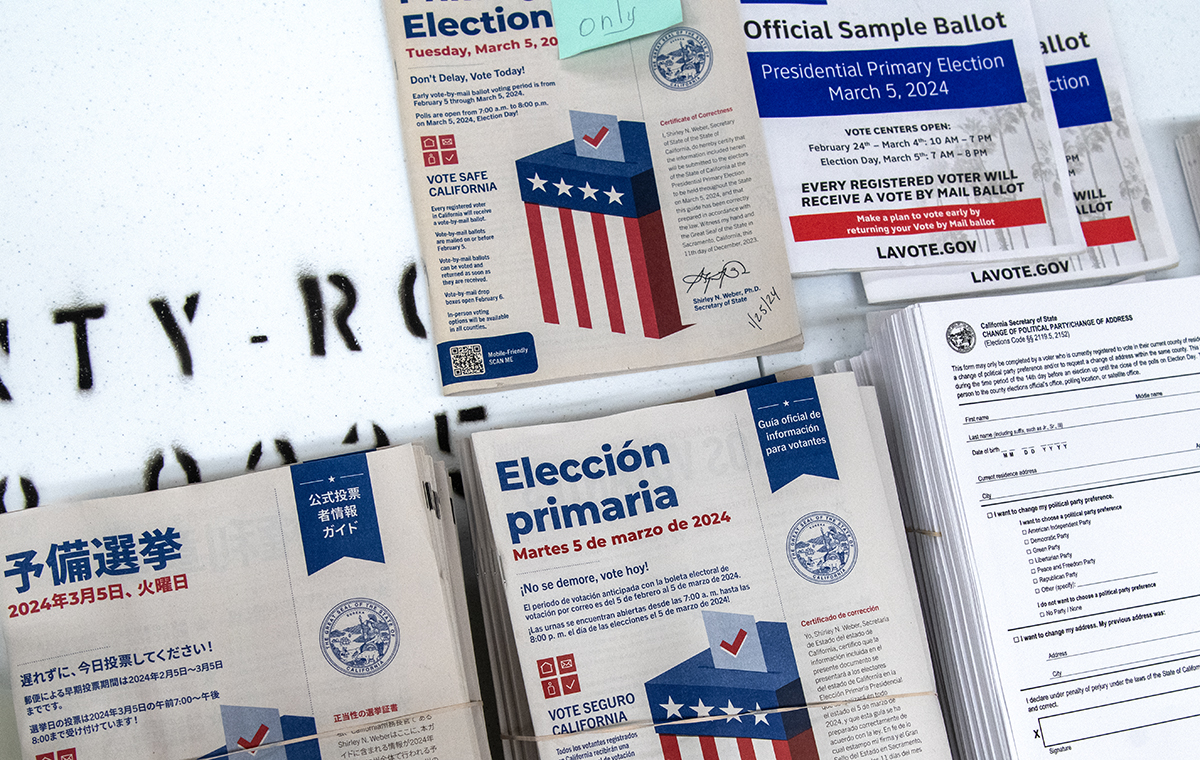This article was originally published by LAist on Oct. 29, 2025.
If you’re voting by mail in California’s special election, or in any election, each ballot filed requires a signature. Those signatures are then verified as ballots are counted. Here’s how that process works.
Verifying ballot signatures
Election officials compare each ballot signature to the one on file in a voter’s registration records.
In L.A. County, ballot signatures are scanned by a device that compares the signature to all signatures in a voter’s registration file. That can include a driver’s license or California ID, paper registration affidavits or prior ballot envelopes. If a signature is mismatched or missing, it gets pulled for human review.
In Orange County, signature comparisons are done by humans — not scanners. According to O.C. Registrar of Voters Bob Page, three election officials have to agree that a ballot signature is “significantly” different from the one on record for it to be pulled.
Page said the signature doesn’t have to be an exact match.
In verifying, officials consider spelling, the slant of a signature and individual letter characteristics. For example, how the letters “t” and “i” are crossed and dotted.
Officials also consider possible explanations for discrepancies. For example, evidence of trembling could be health-related, a pen type or writing surface could have affected the quality of the signature, or a signature may have been signed in a rush.
What happens if a signature gets challenged?
This is when a ballot gets “cured” — which just means it goes through an extra verification process.
State law requires counties to send notices by first-class mail by the next business day after a ballot signature is challenged. The mailed notice includes a cure statement to fix the signature. Voters can return the form to a local registrar by dropping it off in person, by mail, by email, by fax or using an online application.
“If the voter provided a phone number or email address with their registration, we must make a second notification by phone or email,” Page said.
Voters can choose a preferred secondary notice through the Secretary of State’s “Where’s My Ballot?” tracking service.
“The Registrar of Voters and the state and county ballot tracking services are the primary sources for ballot-challenge notices,” Page said. “But, political parties and campaigns can also access a list of all voters whose vote-by-mail ballot was challenged. So, they may also call you or knock on your door.”
There’s plenty of time to fix a mismatched signature. The county Registrar of Voters must process all cure statements received by 5 p.m. Nov. 30.
Why does this matter?
Voter signatures on ballots and matching them to official records are the main way we verify a voter’s identity.
The rejection rate for ballots for most California counties is between 1-2%. For Los Angeles County during the 2024 general election, that was around 21,300 ballots and 13,600 ballots in Orange County.
Those ballots may have been rejected over a mismatched or missing signature. A ballot also can get tossed if a voter turned in the ballot late, doesn’t have an ID on file or already cast a vote for the same election.
How do I know if my signature will match what’s on file?
Page recommends voters review the signature on their Driver’s License or state ID. Voters can also ask to review the signatures in their registration file at their local registrar’s office, he added.
Are you signed up for alerts?
To follow the status of your ballot, you can sign up for the state’s ballot tracker here.
Orange County voters can confirm the status of their ballot here. L.A. County voters can check here.
Brianna Lee contributed to this story.

